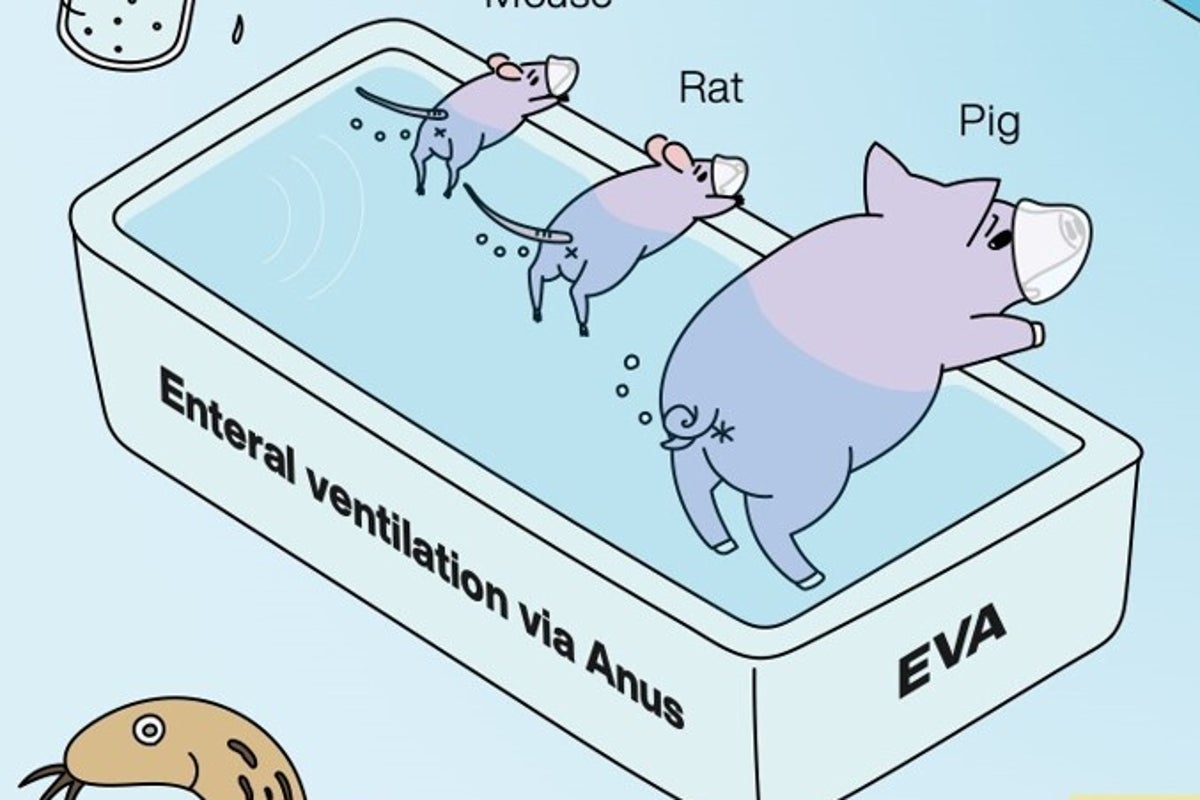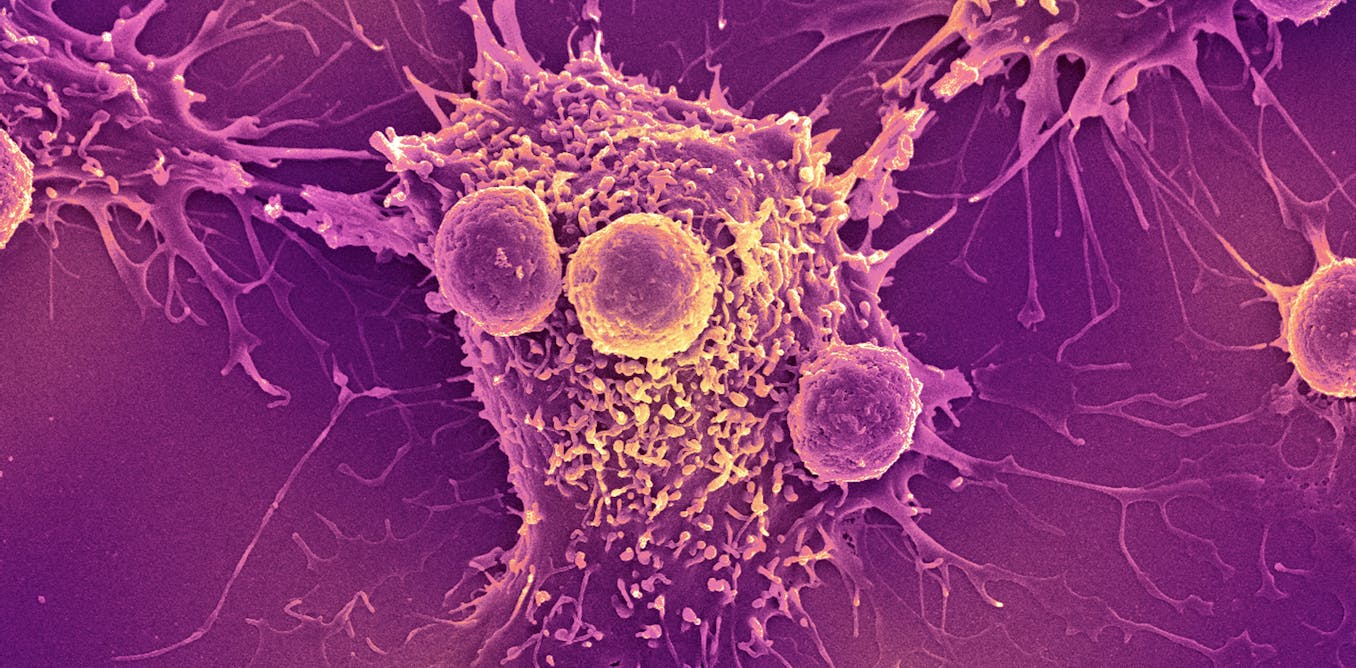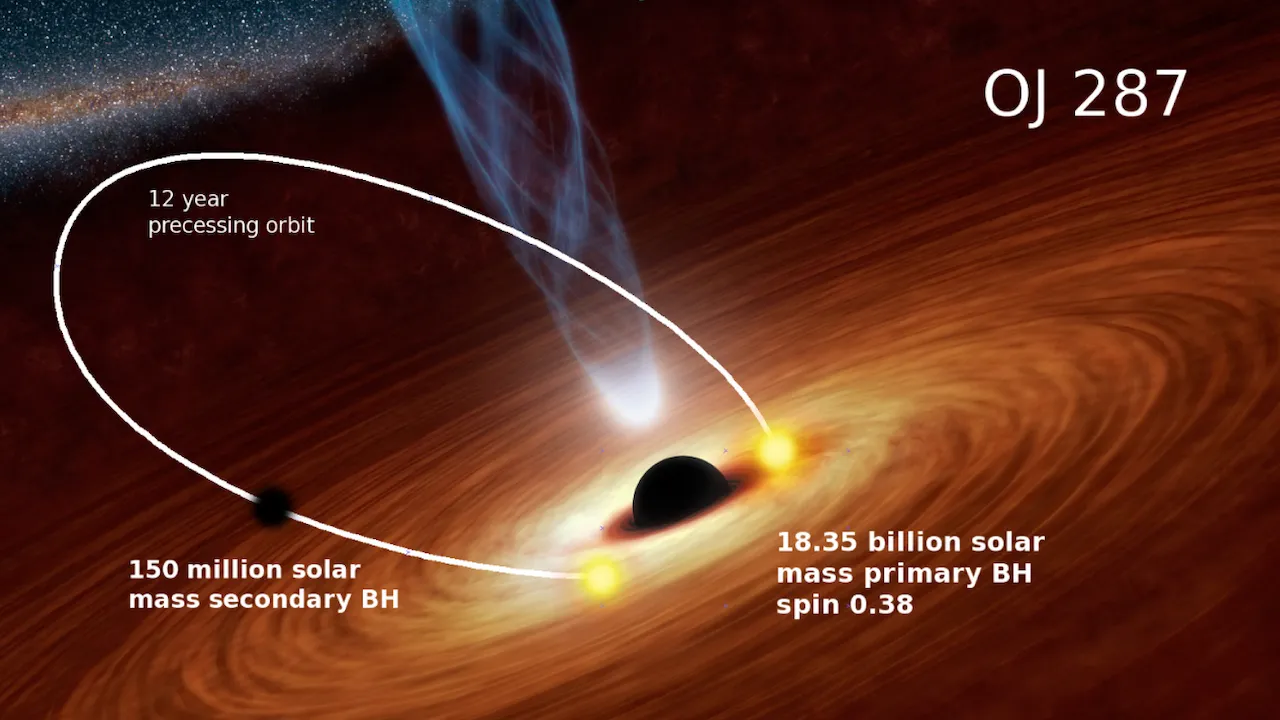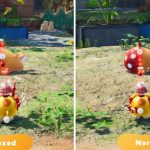Astronomers with the Event Horizon Telescope (EHT) made history in 2019 by producing the first image of a black hole. The object in question was the supermassive black hole (SMBH) at the center of M87, a supergiant elliptical galaxy about 53.5 million light-years distant in the constellation Virgo. This was followed in 2022 with the first-ever image of Sagittarius A*, the SMBH at the heart of the Milky Way galaxy. Now, in another first, astronomers have observed a pair of black holes orbiting each other in quasar OJ287, an Active Galactic Nucleus (AGN) located 4 billion light-years away in the constellation Cancer.
Mauri J. Valtonen, an astronomer and professor from the Tuorla Observatory and the University of Turku, Finland, led the research. He was joined by an international team of researchers from the Aryabhatta Research Institute of Observational Sciences (ARIES), the Tata Institute of Fundamental Research, the CAS’ Key Laboratory of Radio Astronomy and Technology, the Astronomical Institute at Osaka Kyoiku University, the Astronomical Institute of the Czech Academy of Sciences (ASU CAS), the Nordic Optical Telescope, the Hiroshima Astrophysical Science Center (HASC), and multiple universities and observatories.
AGNs, or quasars (short for “quasi-stellar objects”), are the core regions of galaxies that have SMBHs at their center. These SMBHs cause surrounding material to infall around them, forming accretion disks that are accelerated to close to the speed of light. This process releases a tremendous amount of radiation spanning the entire spectrum (optical, radio, X-rays, gamma-rays, etc.), temporarily making the core region outshine all the stars in the disk combined. In many cases, the SMBHs will cause material to form jets that extend from their poles, reaching thousands to millions of light-years.
OJ287 was first observed in the 19th century, when astronomers accidentally noticed it in images of other celestial objects in the same part of the night sky. In 1982, Finnish astronomer Aimo Sillanpää (then a master’s student at the University of Turku) theorized that two co-orbiting black holes were at the center of this quasar based on how its brightness changed regularly over a 12-year period. Ever since then, astronomers from around the world have been monitoring OJ287 to test this theory in the hopes of learning more about the orbital motion of binary black holes.
As Valtonen explained in a University of Turku press release:
Quasar OJ287 is so bright that it can be detected even by amateur astronomers with private telescopes. What is special about OJ287 is that it has been thought to harbour not one but two black holes circling each other in a twelve-year orbit, which produces an easily recognizable pattern of light variations in the same period.
Based on their observations, astronomers estimate that the system consists of a primary black hole of 18 billion solar masses, orbited by a secondary black hole of 150 million solar masses. As with all SMBHs, the primary is surrounded by a bright accretion disk, which the secondary will impact twice during its 12-year orbital period. Several weeks before the secondary impacts the disk and passes through, it will emit bright bursts of radiation. In 2021, Doctoral Researcher Lankeswar Dey (then working part-time at the University of Turku) led the team that detected light from these two black holes for the first time.
Unfortunately, NASA’s Transiting Exoplanet Survey Satellite (TESS), which captured images of the binary pair in optical light, did not have the resolution to visualize them individually. Resolving the black holes individually required high-resolution imaging provided by an international space Very Long Baseline Interferometer (VLBI) project led by the Astro Space Center of Lebedev Physical Institute in Moscow, which includes the RadioAstron satellite. As Valtonen explained:
The image of the two black holes was captured with a radio telescope system that included the RadioAstron satellite. It was in operation a decade ago, when OJ287 was imaged. The satellite’s radio antenna went half-way to the Moon, which greatly improved the resolution of the image. In recent years, we have only been able to use Earth-based telescopes, where the image resolution is not as good.
An illustration of the proposed astrophysical system of OJ 287. Credit: Valtonen, M. et al. (2025)
When the team compared earlier theoretical calculations with the radio images they acquired, they found that the two black holes were precisely where they were predicted to be. This effectively proved that co-orbiting black holes exist within quasars, thus resolving a 40-year-old mystery that began with the discovery made by Sillanpää and his colleagues. “For the first time, we managed to get an image of two black holes circling each other. In the image, the black holes are identified by the intense particle jets they emit,” said Valtonen. “The black holes themselves are perfectly black, but they can be detected by these particle jets or by the glowing gas surrounding the hole.”
In addition, the team also identified a new kind of jet emanating from the secondary black hole, which appears to have a twisted, serpentine profile. This is due to the way the secondary black hole orbits rapidly around OJ287’s primary, causing its jet to divert depending on its motion. According to the team, future observations, the will see this jet twisting in different directions when the speed and direction of the secondary black hole changes in relation to its orbit.
Further Reading: University of Turku, The Astrophysical Journal
First Appeared on
Source link













